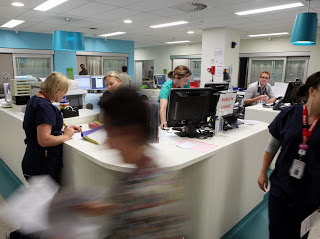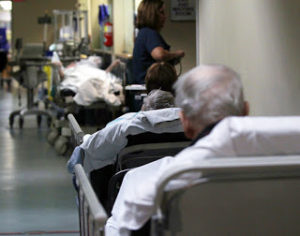During this year I had unusually many encounters with a number of healthcare providers, once or twice as the recipient of care, and others as a companion, both in an inpatient and ambulatory settings. These experiences have lead me to deeply realize that today’s healthcare is very dysfunctional and full of waste! I know what you are thinking, and I know that this may not sound as a big discovery, but perhaps the blessing (or curse in this care) of learning more about lean, system thinking, continuous improvement..etc, has made the picture so crystal clear to me, and easy to spot compared to, let’s say, the untrained eye.
The irony lies in that everyone claims they are providing the best quality, most compassionate and patient-centered care. You could hardly find a healthcare facility without these as strategic goals, values, and slogans everywhere, while the bitter fact, most of them are merely average. Another irony is that many for-profit organizations assume they are making a lot of profit based on the financial reports, but if you look deeper, they are wasting as much money down the drain. Then we wonder why healthcare costs keep rising, and why quality and safety are not getting any better, at least from the perspective of recipients of care.
Miscommunication:
No two people disagree that communication is one of the most important requirements of safe and good healthcare, and everyone preaches about that during meetings and conferences. So, we try to standardize it in a very restrictive manner, or purchase high-end automated information systems. However, when it comes to real daily work, miscommunication is very common, and at many instances, highly risky.
One can easily notice the number of repeatedly asked questions by different healthcare professionals at any care setting, whether outpatient, inpatient or in between. It makes one wonder if there is any dialogue actually going on between receptionists and nurses, nurses and doctors, doctors and other doctors, and those doctors with other care professionals, and whether they really do work as a team like all the nice group photos with smiley faces posted on the walls or hospital websites. This gap will eventually lead to waste in time, effort, and the cost of sophisticated system, or at least paperwork, let alone patient dissatisfaction. Working in silos is an issue in healthcare that improvement experts talk about all the time, but is still very common and evident.
There are several factors that play part in this. The first in my opinion has nothing to do with the intentions or even the awareness of the providers about the importance of good communication, but with how the clinical care processes are designed, or not designed for that matter. Most of the care planning is individualized, the information gathered about a patient condition are documented, sometimes overly, but not shared in real-time, and everyone know how t to navigate and fill fields on a computer, but few actually read them. The other factor is more ingrained in the heritage and culture of healthcare
The hierarchical relationship between healthcare professionals where the physician is still an authoritative figure who doesn’t have to communicate with others readily and openly, and by that I mean 2-way communication. I’ve seen as many who practiced medicine many cases where these disconnections lead to patient harm or unfortunately death.
to be continued ..




